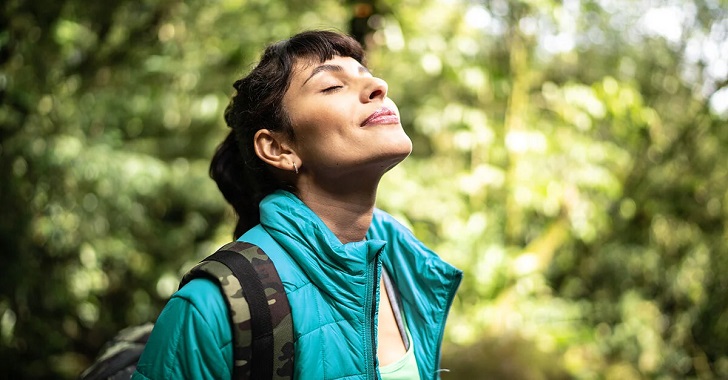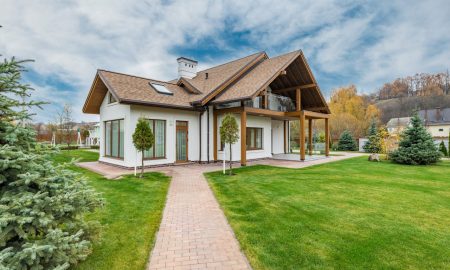
The Benefits of Being in Nature

Green spaces are areas covered with vegetation, such as parks, gardens, and forests, that provide a natural environment for people to relax and enjoy. In recent years, the role of green spaces in promoting mental health has gained considerable attention, with numerous studies exploring their positive effects. This article discusses the benefits of green spaces on mental health and their potential impact on communities.
The calming effects of green spaces:

FG Trade/ Getty Images | Look deep into nature, and then you will understand everything better
One of the primary benefits of green spaces is that they can have a calming effect on people. Studies have shown that exposure to nature can reduce stress, anxiety, and depression while improving overall mood. This can be attributed to the peaceful and relaxing atmosphere that green spaces provide and nature’s positive impact on our mental and emotional well-being. Additionally, physical activity in green spaces is beneficial in reducing symptoms of anxiety and depression.
Green spaces and community building:
Green spaces can also be essential in promoting social interaction and community building. They provide a space for people to gather, engage in activities, and connect. Public parks and gardens can promote community and social cohesion in densely populated cities, where people often lack access to green areas.
The impact of green spaces on physical health:

Pinterest/ Healthline | Trees can be contorted, bent in weird ways, and they’re still beautiful
In addition to their positive effects on mental health, green spaces can also positively impact physical health. Exposure to nature has been shown to improve physical health by reducing stress levels, increasing physical activity, and promoting healthy habits. Studies have also found that people who live near green spaces tend to have lower rates of chronic illnesses, such as heart disease and diabetes, compared to those who live in more urban areas.
Improved mood and emotional well-being:
Being in green spaces has also improved my mood and emotional well-being. Research has found that people who spend time in nature are more likely to report higher levels of happiness and lower levels of anxiety and depression. This can be due to the sense of peace and tranquillity that green spaces provide and the opportunity to disconnect from the stresses of daily life and engage in physical activity.
Physical health benefits:

FG Trade/ Getty Images | In nature, nothing is perfect and everything is perfect
In addition to the mental health benefits, being in green spaces can positively impact physical health. Physical activity has improved cardiovascular health, boosted immune function, and reduced the risk of chronic diseases such as obesity and type 2 diabetes. Spending time in green spaces can also increase exposure to sunlight, which is important for maintaining healthy vitamin D levels.
The role of green spaces in urban development:
Finally, green spaces play an essential role in urban development, particularly in large cities with limited space. By incorporating green spaces into the design of cities, urban planners and architects can help promote mental and physical health, improve air quality, and provide a space for people to connect with nature. However, in many cities, green spaces are being threatened by urbanization and development, making it crucial to prioritize their preservation and protection.
More in Medicare
-
`
Best Home Energy-Saving Devices
In our world today, where caring for the environment goes hand in hand with making smart financial choices, discovering ways to...
November 18, 2023 -
`
Amazon’s Ambitious Investment in Anthropic
In a bold move, Amazon has announced a massive investment of up to $4 billion in Anthropic, an AI firm based...
November 9, 2023 -
`
What Are Data Silos in Healthcare & How AI Can Help Tear Them Down
In the ever-evolving landscape of healthcare, data is the heartbeat that keeps the system running. It is the lifeblood that flows...
November 1, 2023 -
`
Free Rail Travel in Austria? But How?
Have you ever dreamed of exploring Austria’s breathtaking landscapes and vibrant festivals without spending a dime on train tickets for an...
October 19, 2023 -
`
The Rise & Fall of FaZe Clan
In the ever-evolving gaming collectives, one name has stood out above all others: FaZe Clan. However, this beloved gaming conglomerate is...
October 15, 2023 -
`
Everything You Need to Know About Vaccine Technologies
You might remember that little pinch on your arm or a quick jab to the thigh as a child: A momentary...
October 3, 2023 -
`
Opinion: The Worst Movies of All Time
In filmmaking, where creativity knows no bounds and storytelling takes center stage, there are bound to be both shining gems and...
September 26, 2023 -
`
Exploring the World of Alternative Alcoholic Drinks
When it comes to alcoholic beverages, many of us tend to think of the usual suspects – beer, wine, and spirits....
September 22, 2023 -
`
Why Robots Will Boost Human Employment
The looming specter of job-stealing robots has haunted the workforce for years. But what if this fear is mainly unfounded? In...
September 16, 2023















You must be logged in to post a comment Login